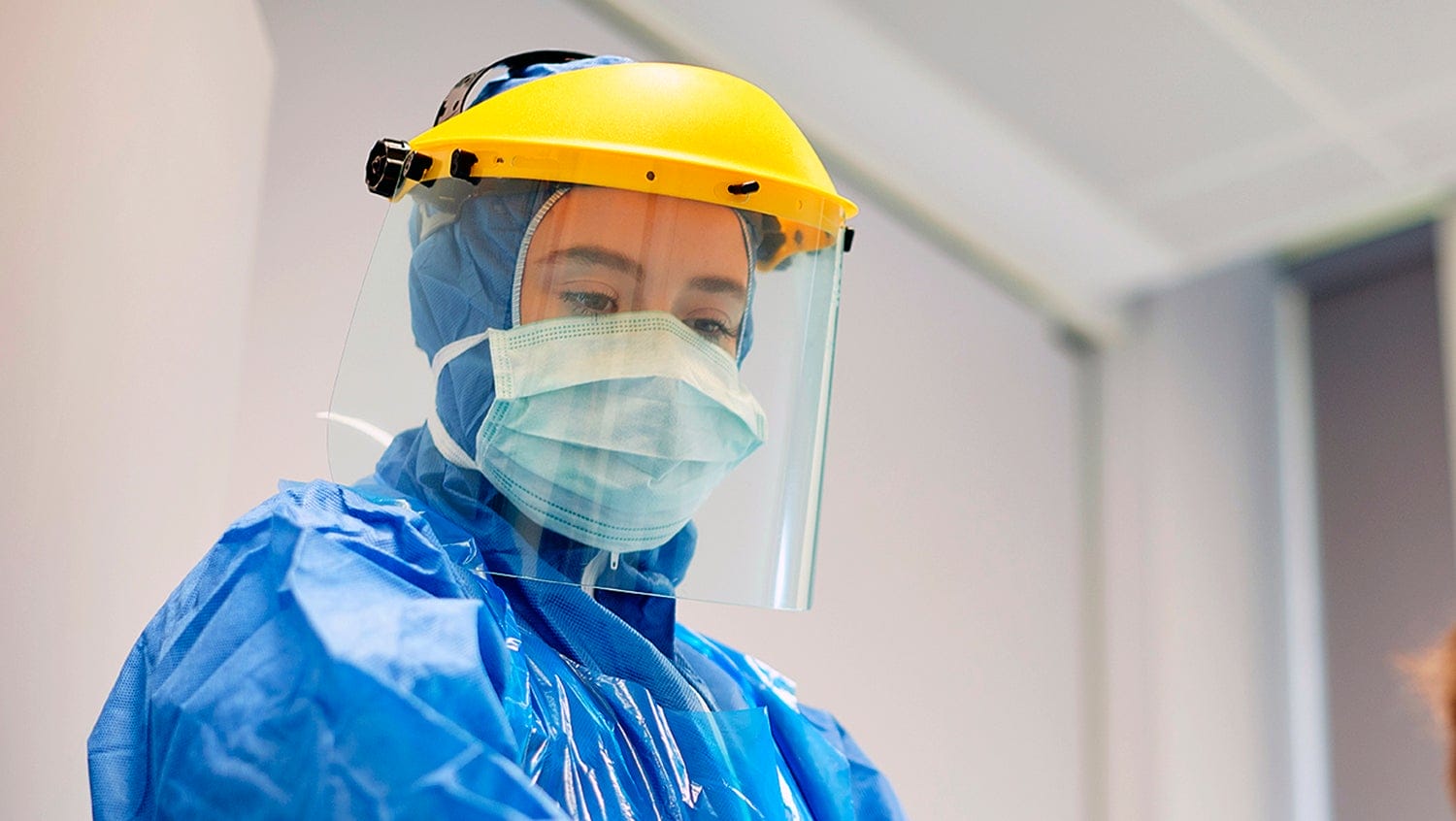
Getty Images
A fourth-year resident from an unlikely specialty steps into the front lines to buoy a health system under siege.
Jacqueline Watchmaker, MD, a chief resident at Boston Medical Center, never thought she would spend her last few months of dermatology residency practicing inpatient medicine during a pandemic. But when she heard the call for residents in her specialty to join the front lines, she quickly volunteered. BMC’s COVID-19 floors are only steps away from the dermatology clinics, but with her suddenly thrust into caregiving fully gowned in PPE, the two wings of the hospital feel worlds apart. Watchmaker and her colleagues are joining tens of thousands of medical professionals redeploying across the nation in the fight against the novel coronavirus. Although grappling with entirely new roles, these recruits are buoyed by a sense of camaraderie in the war against a common enemy.
When COVID-19 infections began snowballing in the United States in February, it became clear that an unprecedented corps of healthcare workers would be needed on the front lines. Government officials and health centers slashed through red tape and employed a multitude of strategies to maximize the health workforce. Fourth-year medical students received early degrees, retired physicians returned to work, and health professionals traveled across the country to serve in the hardest-hit areas. At Boston Medical Center, staff have been pulled in from across the board to fill frontline roles.
Despite the knowledge that it would be a vast departure from the previous three years of her training, Watchmaker felt especially called to serve. Her twin sister is an interventional radiology resident in New York City who was working at Elmhurst Hospital in Queens as COVID-19 cases began to overwhelm the emergency room and ICU.
“She said the system was completely overwhelmed and the death and dying at the hospital was like nothing anyone had ever seen,” remembers Watchmaker. “Hearing her stories, I was so proud and thankful to her for stepping up. I wanted to do the same.”
Watchmaker’s sister became one of the more than 9,000 healthcare personnel that have been sidelined from work when she tested positive in April. Coronavirus has sickened healthcare workers at a shockingly high rate, leaving gaps in an already over-taxed workforce and further underlining the urgency for additional reserves.
Many redeployed clinicians seem to have expertise that is completely divergent from infectious diseases and inpatient care. But specialties such as neurology, radiology, and dermatology all require a year of internal medicine training, which provides a foundation to draw from. As she prepared for her first shift on the COVID floor, Watchmaker leaned on skills she learned as a first-year internal medicine resident, relieved that they came back so quickly.
“Day to day, what I do and treat in dermatology is nothing similar to what I’ve been doing in internal medicine,” she says. “There aren’t many transferrable skills other than compassionate communication with patients.”
Boston Medical Center, a safety-net hospital like Elmherst, has been incredibly hard hit by the coronavirus pandemic, with seven out of 10 admitted patients sickened by the disease. During her shifts, Watchmaker rounds on patients with acute respiratory symptoms of the virus as well as COVID-positive patients suffering primarily from other severe comorbidities. What the patients share is fear and loneliness in isolation and the desperate need for reassurance.
With internal medicine working at maximum capacity, they are appreciative of her willingness to join them on the front lines. “My co-resident has told me, ‘If you weren’t here, I’d be drowning,'” says Watchmaker. She is finding solace in her COVID team, too, who are providing guidance and encouragement as she steps into her new role. When she finds herself tired, confused, or overwhelmed, she repeats the phrase that has become almost like a mantra, soothing in its focus on purpose: I’m here to help.


